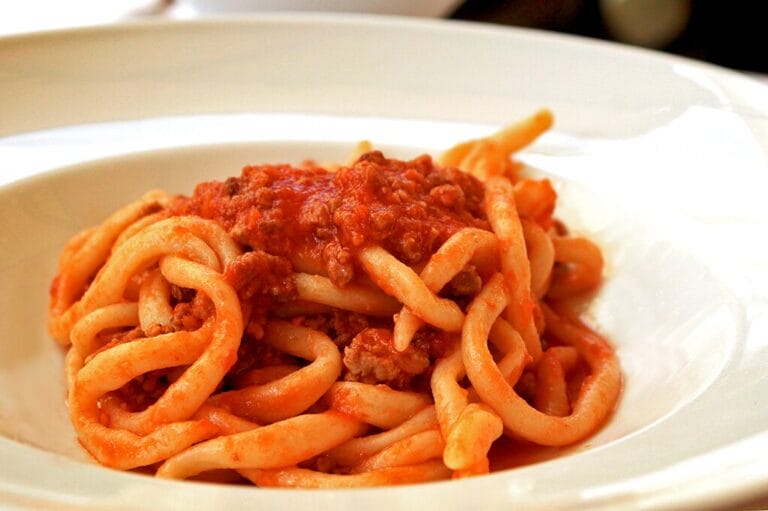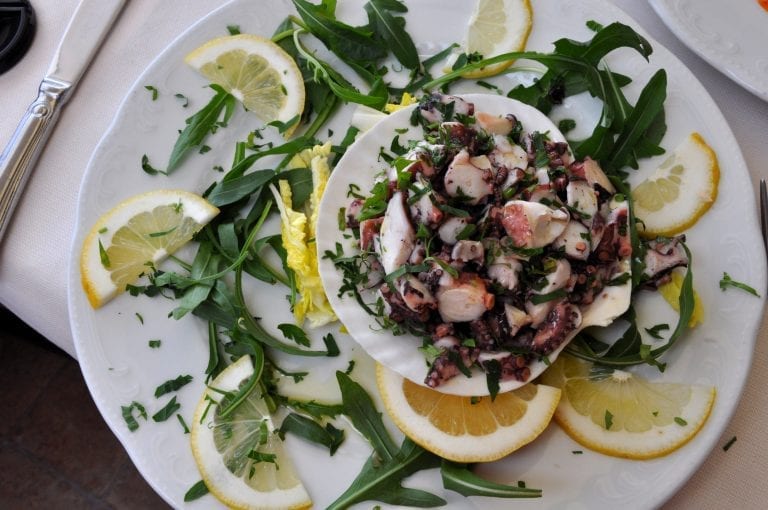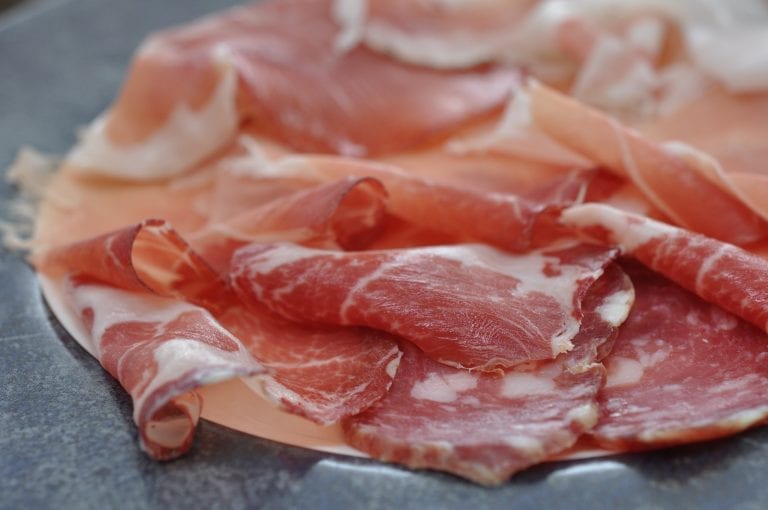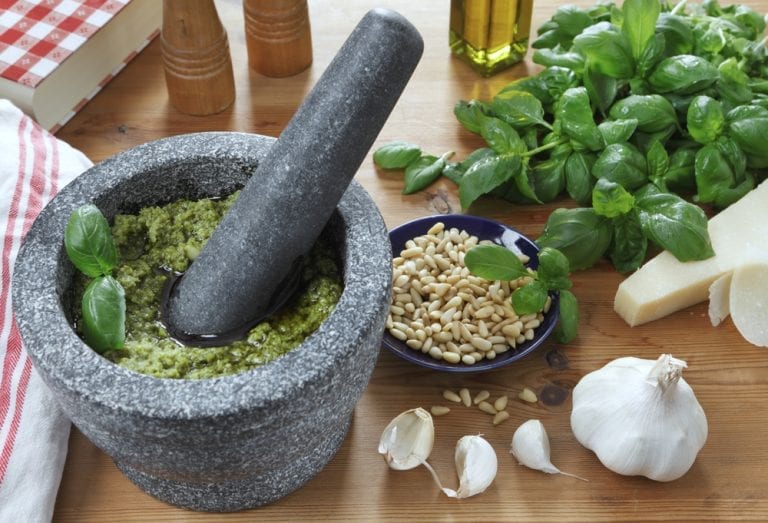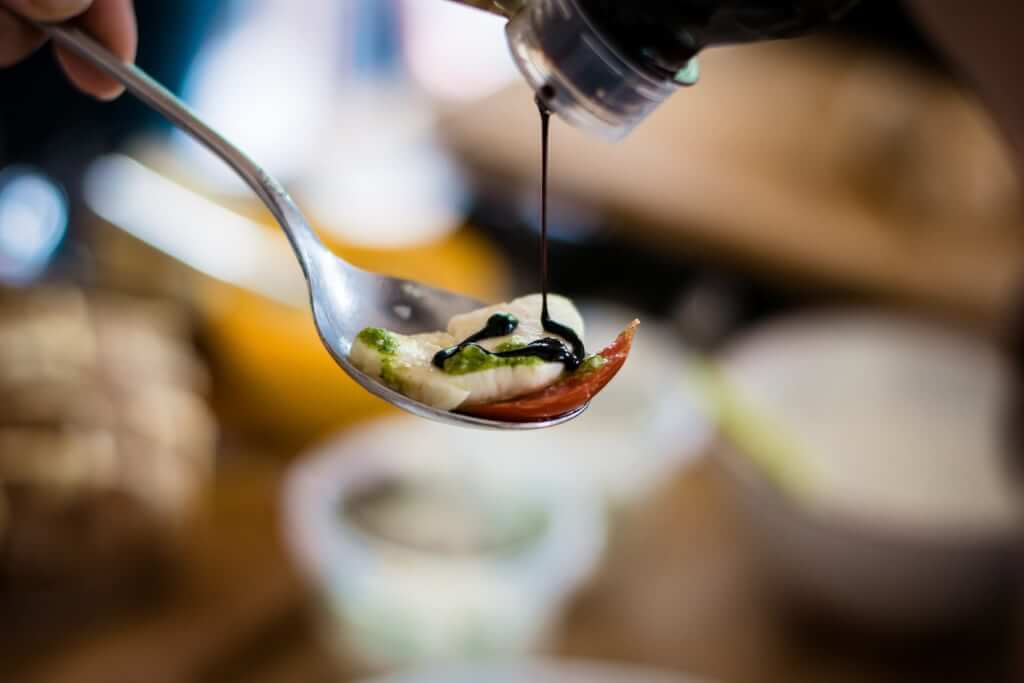
How to Read Italian Menus Like a Pro: A Complete Guide
February 12, 2025
Dining in Italy is one of the best parts of traveling here… but reading an Italian menu? That, we know, can be intimidating. While some restaurants offer menus in English, many local, off-the-beaten-path favorites don’t.
Italian menus can be intimidating, but we’re here to help. Here are some helpful hints to help you choose not only where to eat in Italy, but how to navigate the restaurant’s menu, too.

Don’t let Italian menus intimidate you. Let us help you navigate them.
Table of Contents
ToggleHow do I choose where to dine in Italy?
From big cities to small towns, most Italian destinations offer a range of dining options to suit every budget. And the establishment’s name usually helps you figure out how expensive your meal will be.
For a laid-back meal:
- Try a pizzeria (for, of course, pizza), a trattoria (usually a no-frills family-owned establishment), or an osteria or hosteria (serving up simple meals with a focus on wine).
Want something more upscale?
- Head to a ristorante for an elegant ambiance, larger dining room and more extensive menu.
We visit many of the above types of establishments on our Italy food tours in Rome, Florence, and Venice—join us to learn more about how to navigate each kind of dining establishment!
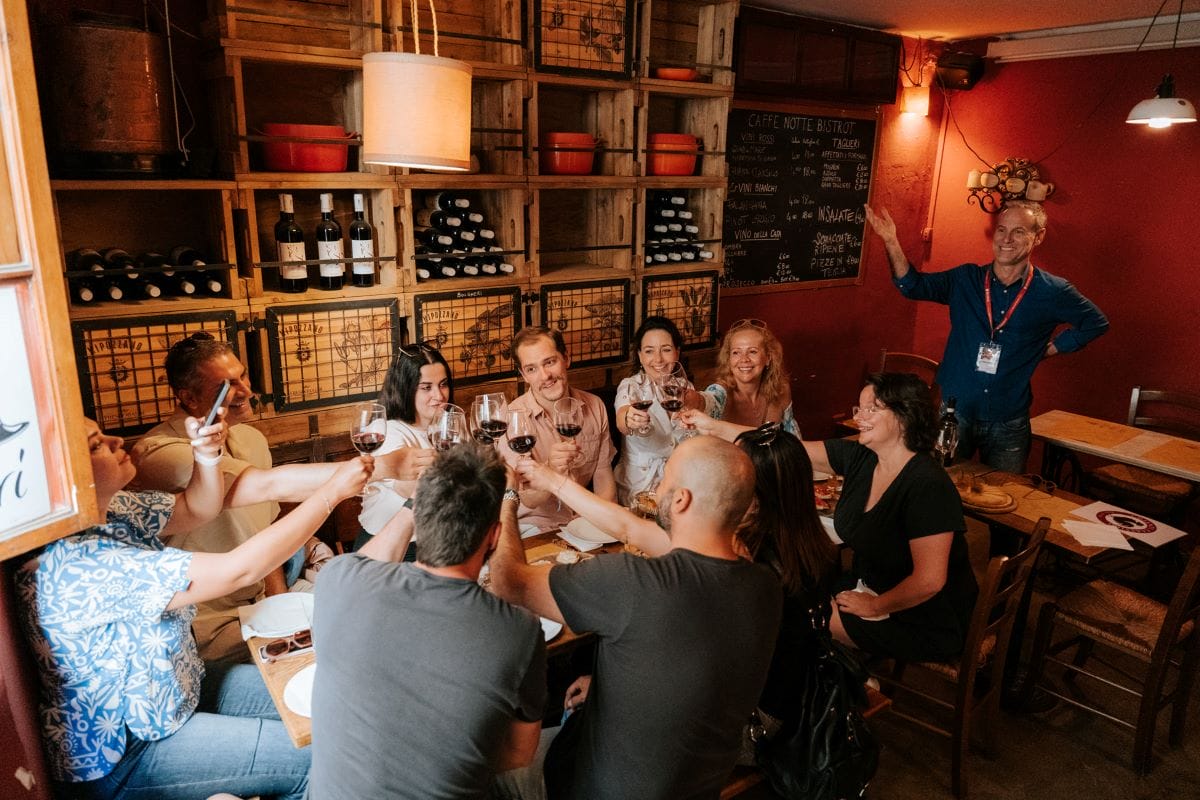
The best part about visiting Italy is eating!
What time are meals in Italy?
Lunch usually is served from 12pm to 2pm, and dinner from 8pm to 10:30pm. Many restaurants take reservations over the phone.
To ask for a table for two people at 9pm, for example, you’d say, “Vorrei fare una prenotazione per due persone alle nove”. (Check out our useful Italian for travelers guide for more indispensable phrases).

Meal times in Italy are similar to the States.
Breaking down the Italian menu
When you look at an Italian menu, you’ll see it’s divided into several sections, one for each course. You don’t have to order every single course, but the general rule of thumb is to order at least two (and you can split one of them).
So a couple, for example, might share one antipasto, order individual primi, and then share a secondo.
Here are what the different sections mean, and what food to expect under each.
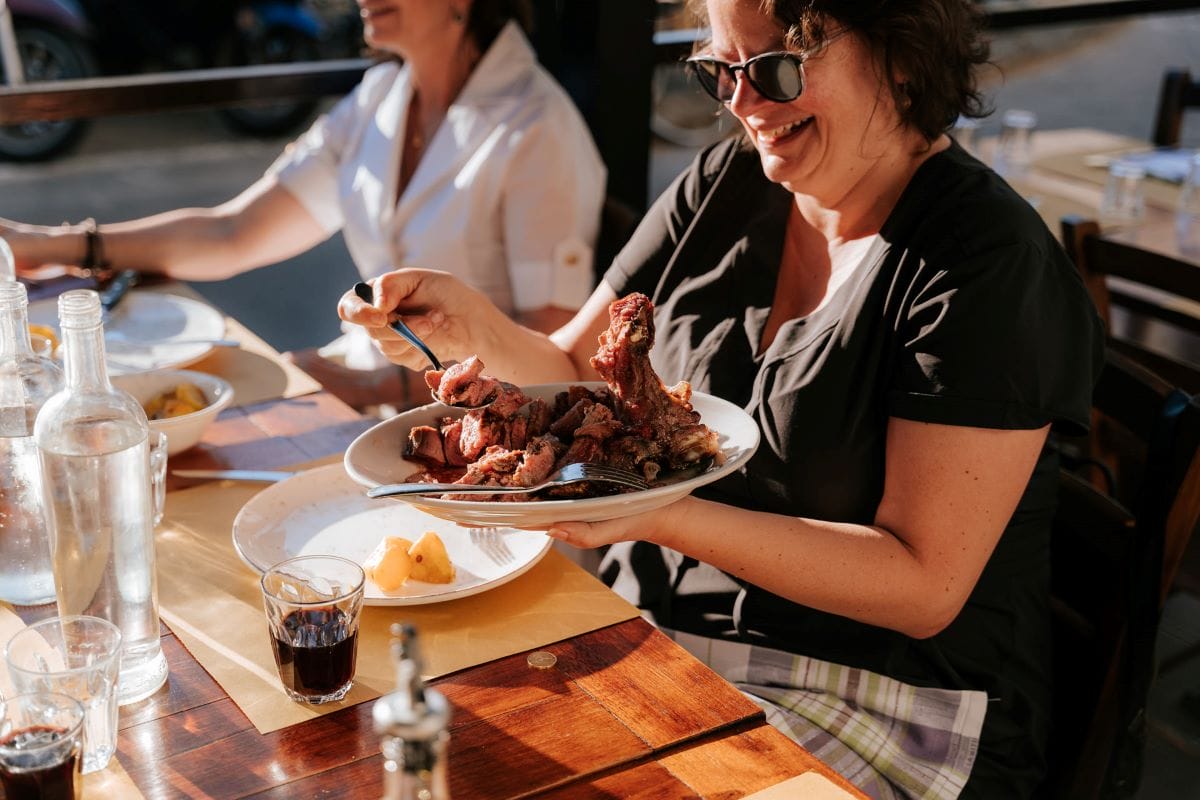
These Italian dishes are sure to put a smile on your face.
How to navigate an Italian meal: Courses explained
Antipasti
Similar to an appetizer, this dish literally means “before the meal.”
For antipasti, most menus offer a wide variety of cured meats and cheeses, bruschetta (toasted bread with tomatoes and other toppings), and pickled or fried vegetables and olives. Ask for the antipasto della casa—the house special—for seasonal and regional specialties.

Nothing beats homemade bruschetta.
Primi
Primi, or “first dishes,” usually include pasta, risotto (creamy rice) or soup. Pasta, of course, comes in an especially endless variety of shapes, sizes, textures, and sauces.
As with everything else on the menu, of course, these dishes will very much depend on what region of Italy you’re in:
- Many restaurants serve al pomodoro (tomato) and aglio, olio e peperoncino (garlic, oil, and hot pepper).
- Liguria: Look for a pasta with pesto (basil, garlic, and cheese).
- Rome: Try pasta all’amatriciana (tomato, pork jowl, and pecorino cheese) or alla carbonara (pork jowl, pecorino or parmigiano, and egg).
- Emilia-Romagna: Ragù alla bolognese (ground meat and tomato) is a must-try.
Remember that portions are much smaller than traditional American sizes, and many diners order a meat or fish entree to follow their primi.
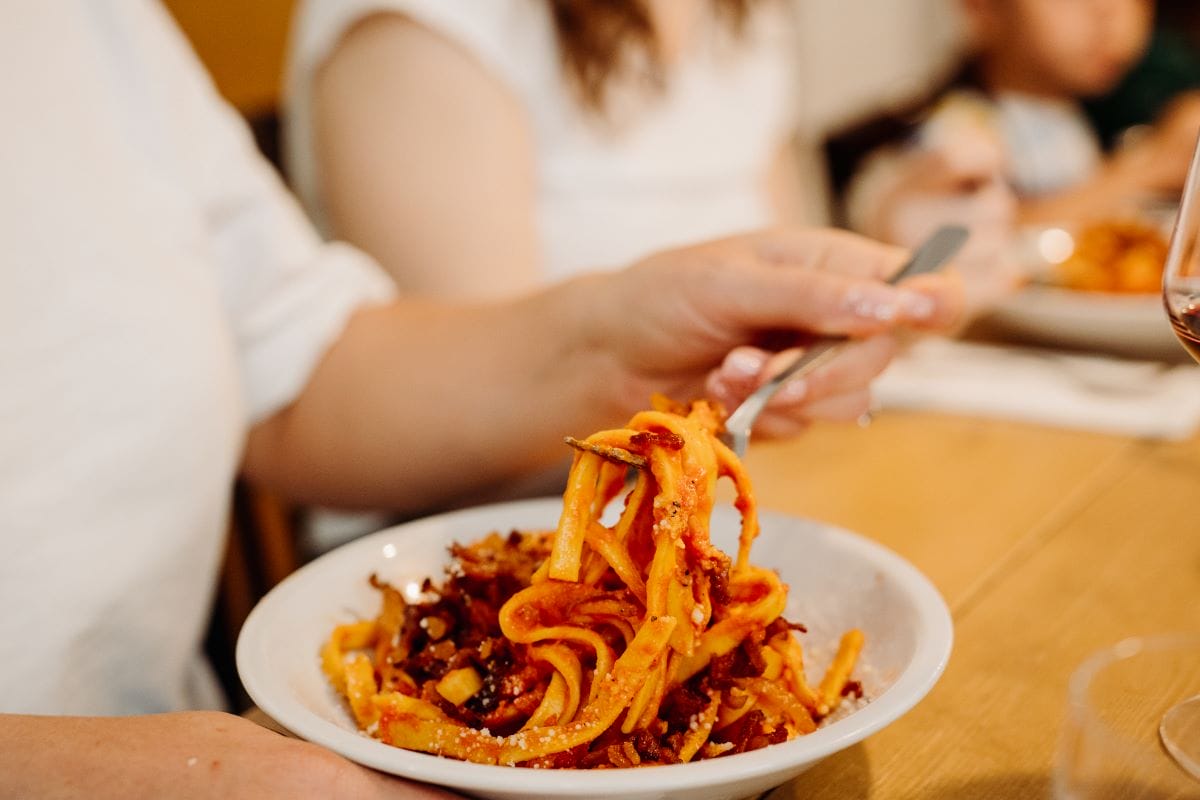
Smaller portions mean you can try more dishes!
Secondi
This is a meat, fish or vegetable main dish, and usually most expensive area of the menu.
Popular secondi include:
- Pollo (chicken), bistecca (steak), manzo (beef), agnello (lamb), arrosto (roast), gamberi (shrimp), salmone (salmon), frutti di mare (mixed shellfish) and frittata (omlette).
Want to know how a dish is being prepared? Be on the look out for this:
- Al forno (baked)
- Fritto (fried)
- Alla griglia (grilled)
Items with a S.Q. indicated next to the name mean price according to weight, so don’t be afraid to ask your server for more details.

Reading an Italian menu takes skill, but once you know how, you’ll be able to order like a pro.
Contorni
Primi and secondi don’t come with any sides or vegetables unless otherwise noted, so diners typically order a contorno (side dish) separately.
Popular contorni include:
- Grilled or sautéed vegetables (verdure grigliate or verdure saltate)
- Mixed green salad (insalata mista)
- Roasted potatoes (patate al forno)
- Sautéed spinach (spinaci saltati)
In some regions, you may also find legumes like lentils or chickpeas, as well as seasonal specialties such as artichokes or asparagus.
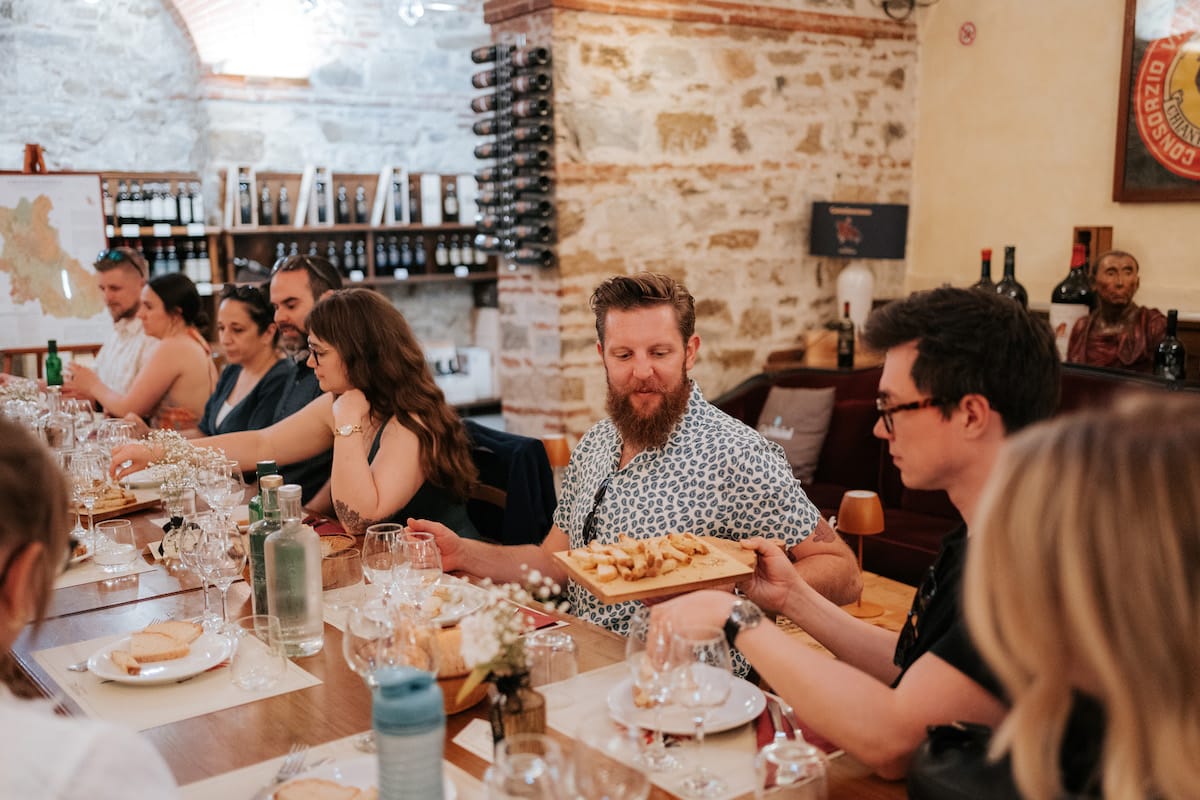
After contorni comes our favorite part of a meal.
Dolci
Many great meals end with a dessert, ranging from light and creamy options to rich pastries.
Popular choices include:
- Gelato (Italy’s famous dense and flavorful ice cream)
- Tiramisu (a coffee-soaked sponge layered with mascarpone and cocoa)
- Cannoli (crispy pastry shells filled with sweet ricotta)
- Panna cotta (a silky, custard-like cooked cream often served with fruit or caramel sauce)
You might also find regional specialties like sfogliatella (a flaky Neapolitan pastry) or zabaglione (a whipped egg yolk and Marsala wine dessert).
For a lighter option, some menus offer a piatto di formaggi (cheese plate), often featuring local varieties paired with honey or jams. Ask your server for the dolci fatti in casa (homemade desserts) for an extra-special treat, as these often highlight traditional family recipes and seasonal ingredients.
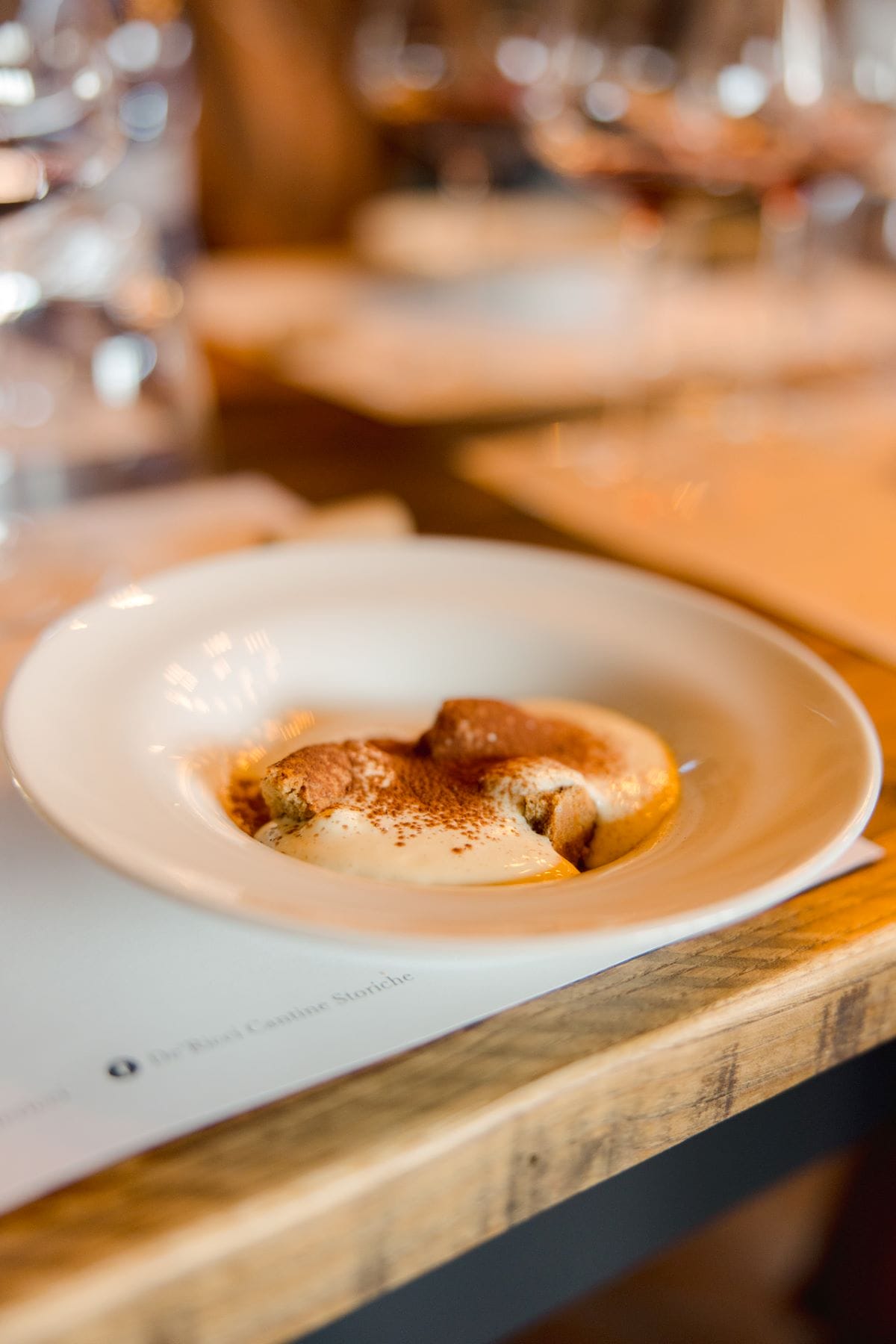
Can you resist Italian desserts?
Digestivi
Need to digest after your meal? Do it as the Italians do… with a strong liquor!
Digestivi are usually made from fruit: grappa from grapes, mirto from bluberries, and limoncello from lemons.
Try cynar, made from artichokes, if you’re feeling adventurous. Another popular digestivo is amaro, bitter digestive; order it ghiacciato if you prefer it iced.
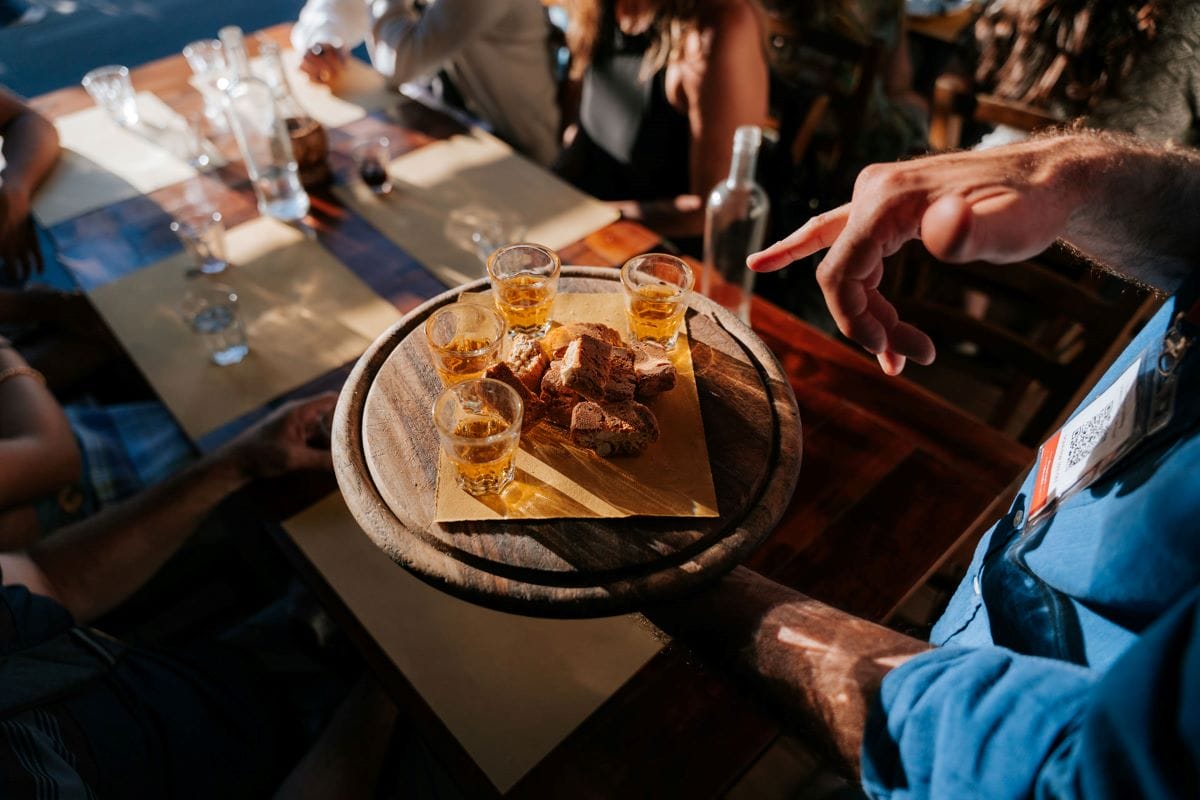
Which digestivi will you try first?
Caffè
Coffee is often ordered after a meal, either normale (espresso shot), macchiato (with a drop of milk) or lungo (a “long” coffee).
Cappuccino is never drunk after dinner: Italians believe that the milk will hinder digestion.
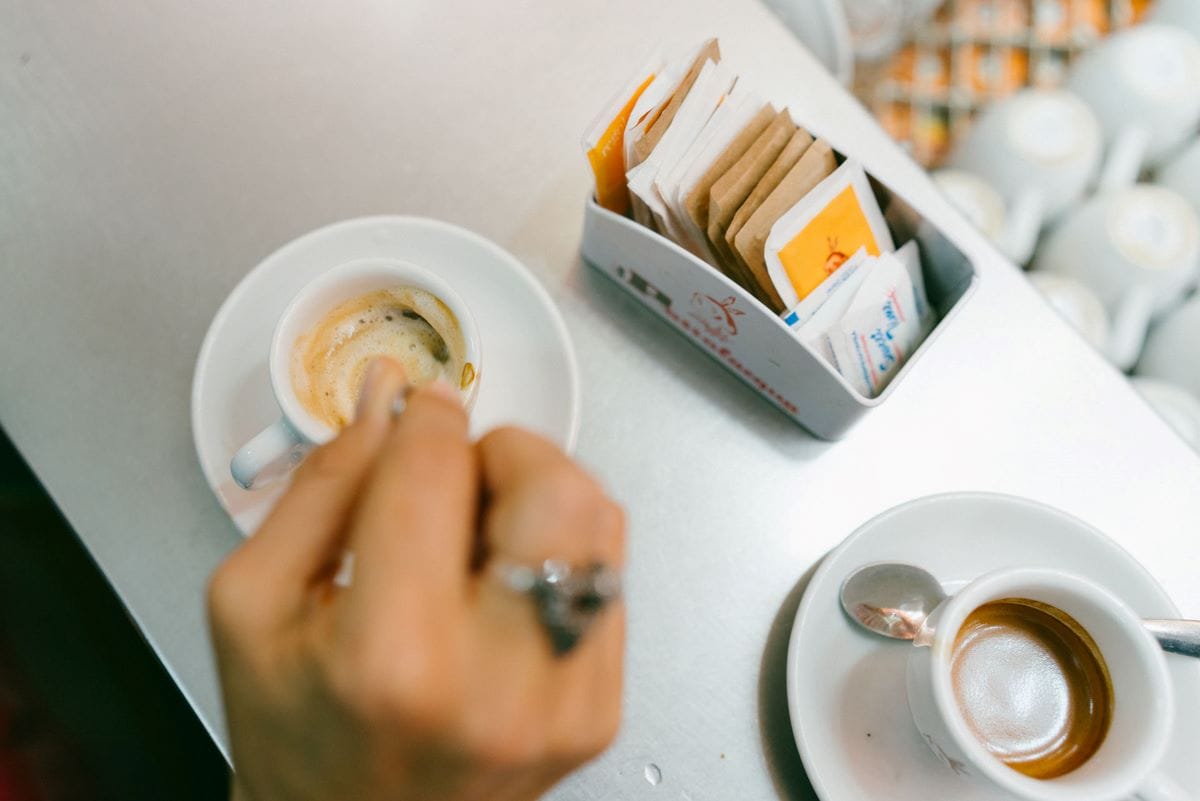
Be like the Italians and order an espresso after your meal.
Bevande
Another popular section of an Italian menu? The wine list, of course.
Many restaurants offer white, red and sparkling varieties by the bottle or glass.
Cocktails are very rarely drank with meals, and beer often accompanies pizza. Tap water is very rare to come by; it is customary to order a bottle of naturale (still) or frizzante (sparkling) water with meals.
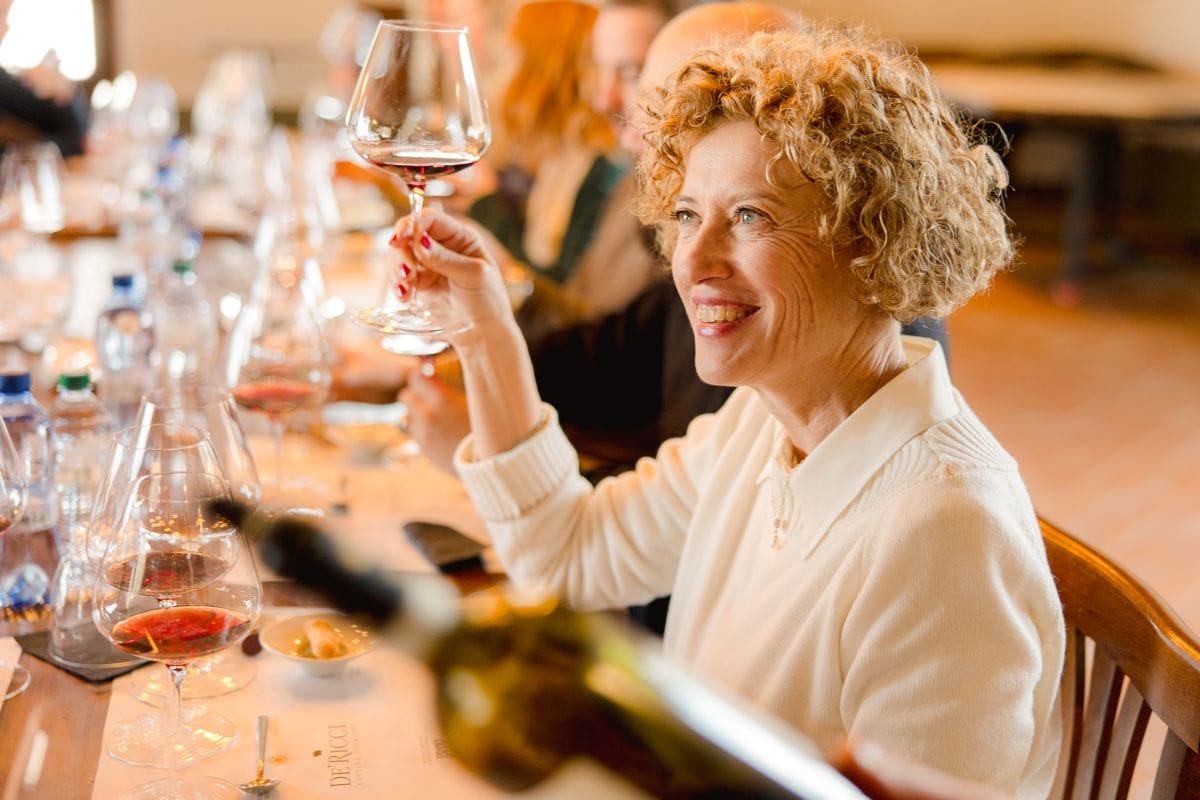
Wine and Italian dishes go hand in hand.
Some last tips for dining in Italy
Don’t hesitate to ask your waiter for a recommendation about what to eat (“Cosa ci consiglia?”), request a translation of ingredients (“Cosa vuol dire…?”), or alert your server to any food allergies (“Ho una grave allergia alimentare a…”).
An extra fee, called coperto (or sitting charge), is almost always tacked onto the bill. On some occasions, and usually only in touristy areas and restaurants, servizio (a service charge) is added, too.
If servizio is added, don’t tip at all; if just the coperto is, you can feel free to simply “round up” on your meal and leave a couple of extra coins, if you enjoyed it.
Buon appetito!
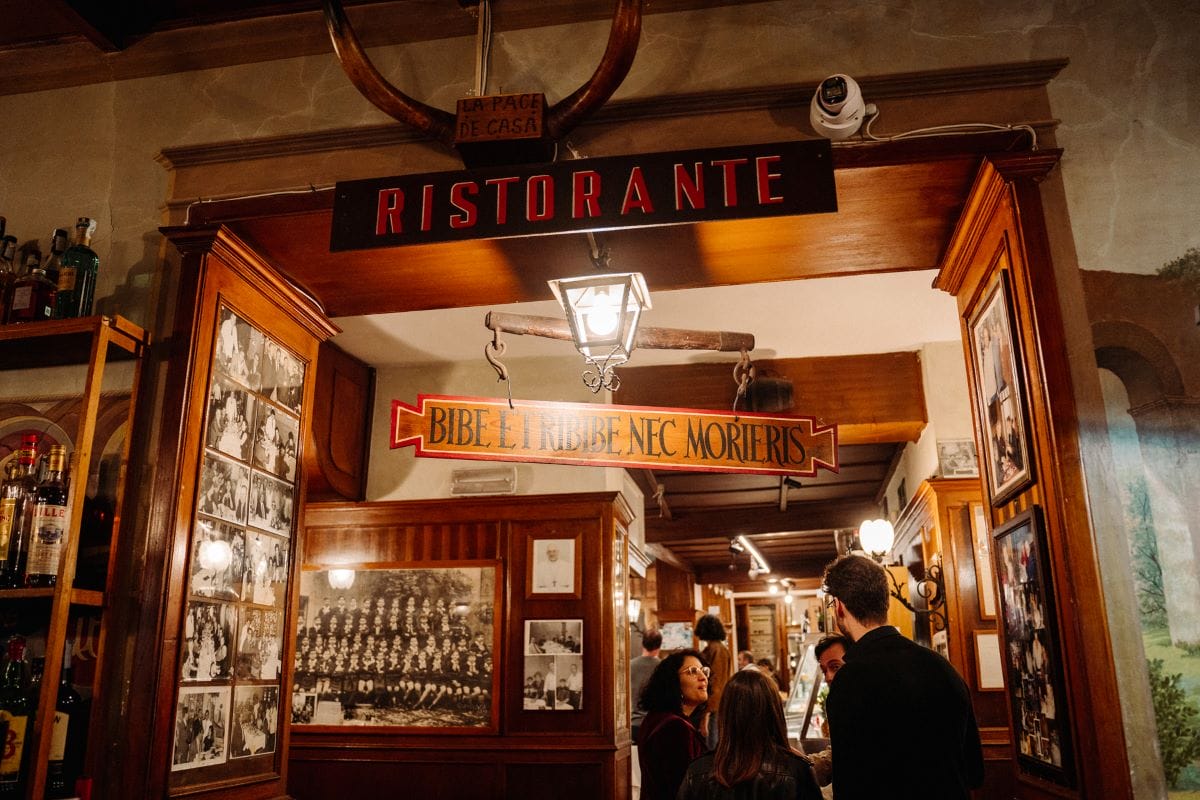
Remember that gratuity is included at restaurants in Italy.
Italian menu FAQ
What is the difference between antipasti and primi?
Antipasti are appetizers served before the main part of the meal and can include cured meats, cheeses, marinated vegetables, and bruschetta.
Primi (first courses) are usually warm dishes such as pasta, risotto, gnocchi, or soup, and they do not typically include meat or fish.
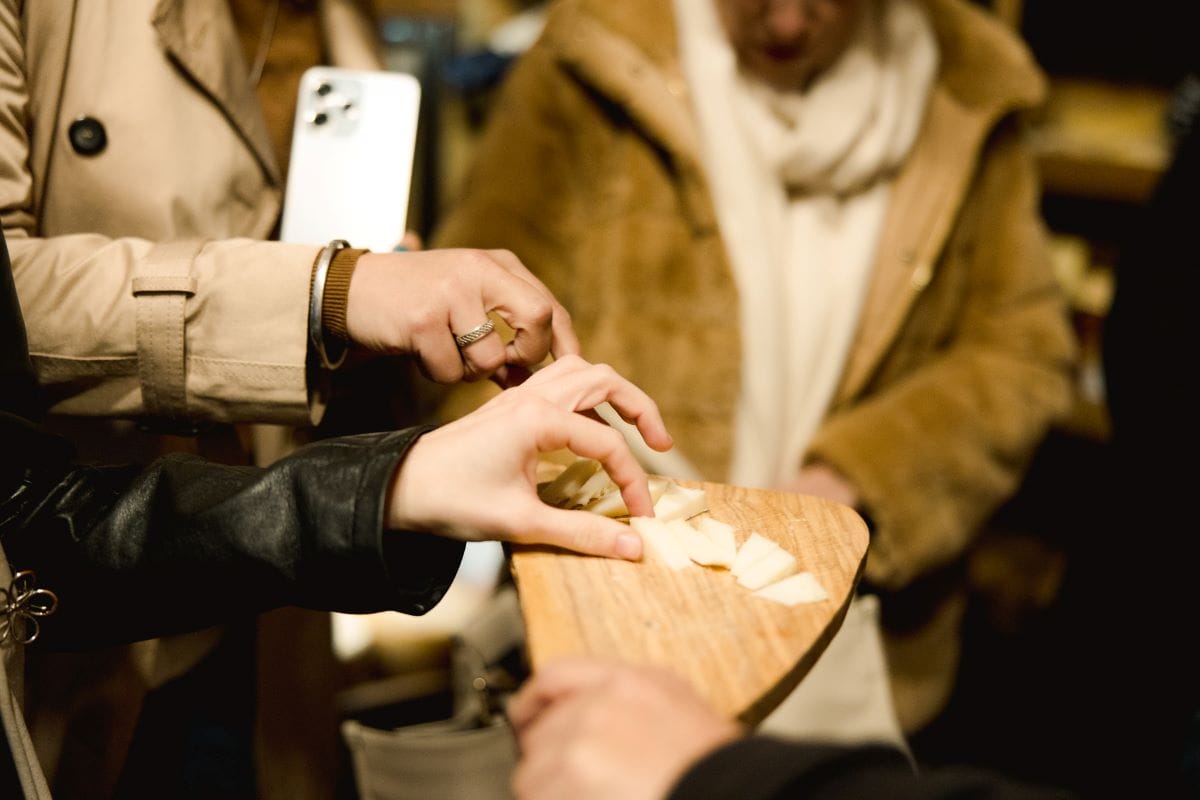
Pecorino cheese is a great option for an antipasti.
How do Italian desserts differ from other cuisines?
Italian desserts emphasize simplicity, quality ingredients, and traditional flavors.
Popular choices include:
- Tiramisu (coffee-soaked ladyfingers with mascarpone)
- Panna cotta (a creamy, custard-like dessert)
- Gelato, which has a denser, more intense flavor than traditional ice cream
Italian desserts often pair well with sweet wines or caffè (espresso).
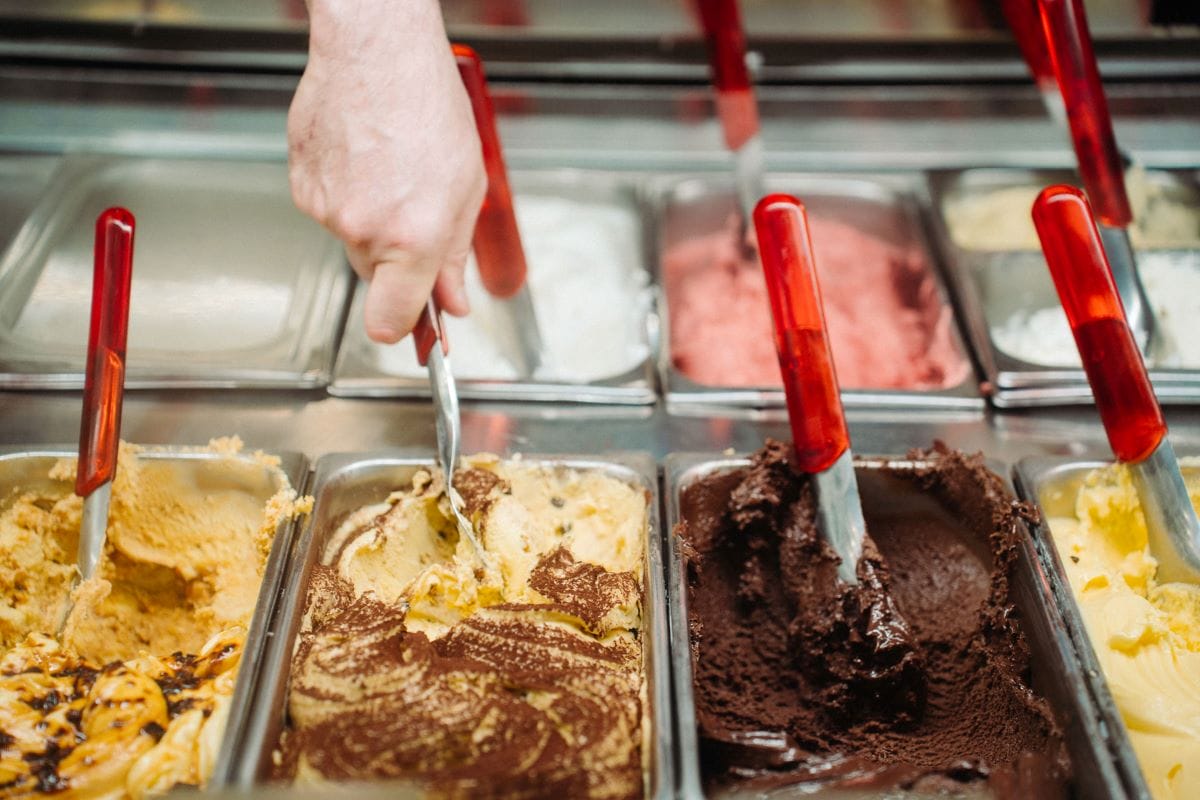
When it comes to gelato and ice cream, gelato is the clear winner.
Do Italian menus include vegetarian options?
Yes, many primi dishes, such as pasta with tomato sauce (pasta al pomodoro), mushroom risotto, or vegetable-based soups, are vegetarian. Additionally, contorni (side dishes) feature grilled vegetables, salads, and potatoes.
Some regions also offer cheese-based dishes like melanzane alla parmigiana (eggplant Parmesan). Always check for ingredients like meat-based broths or sauces if you’re strictly vegetarian.

Make sure to ask the waiter if your dish is 100% vegetarian.
Update Notice: This post was updated on February 12, 2025.

by Elena Ciprietti
View more by Elena Ciprietti ›Book a Tour

Pristine Sistine - The Chapel at its Best
€89
1794 reviews

Premium Colosseum Tour with Roman Forum Palatine Hill
€56
850 reviews

Pasta-Making Class: Cook, Dine Drink Wine with a Local Chef
€64
121 reviews

Crypts, Bones Catacombs: Underground Tour of Rome
€69
401 reviews

VIP Doge's Palace Secret Passages Tour
€79
18 reviews

Legendary Venice: St. Mark's Basilica, Terrace Doge's Palace
€69
286 reviews









